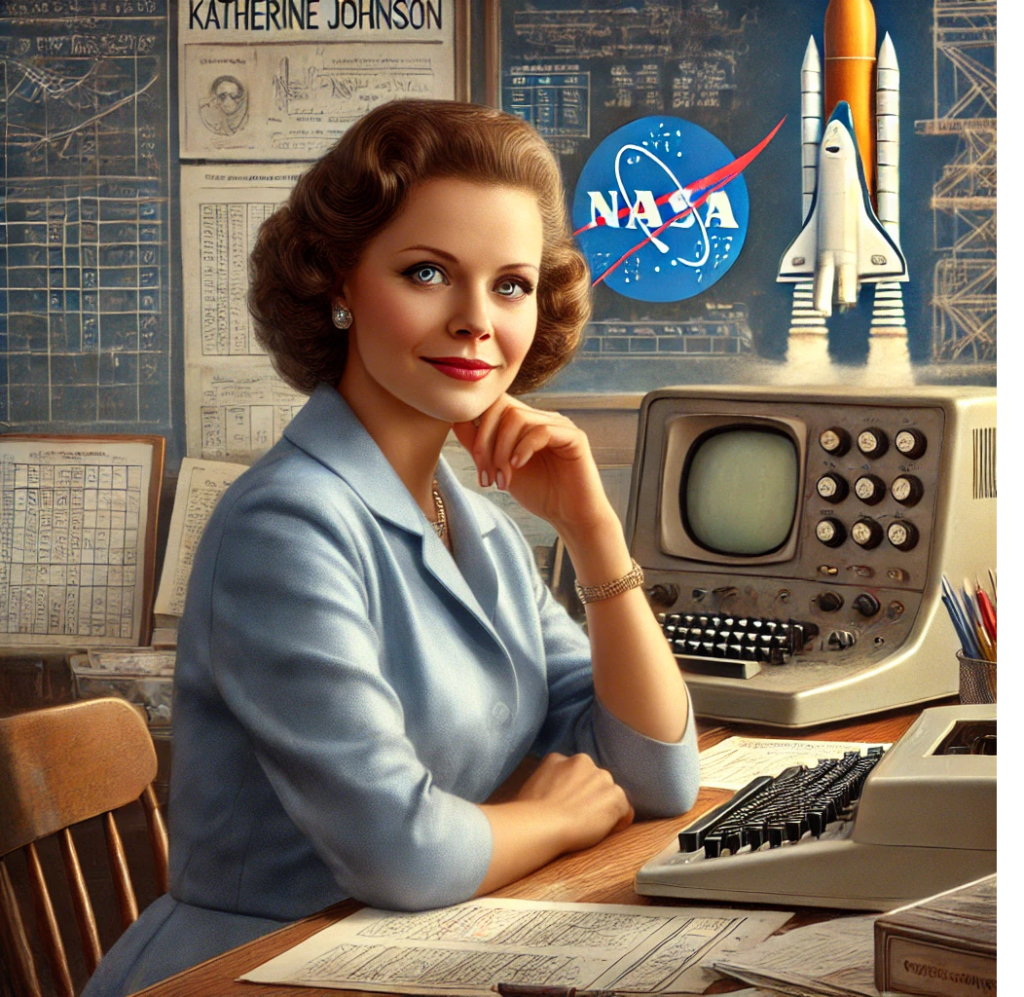Katherine Johnson, a pioneering mathematician and physicist, forever changed the landscape of space exploration. Her meticulous calculations at NASA not only propelled rockets but also shattered racial and gender barriers. Among her remarkable contributions, her work on John Glenn’s orbital flight and the Apollo moon missions cemented her place as a scientific luminary. Johnson’s story is one of brilliance, resilience, and a relentless pursuit of excellence, inspiring generations to dream beyond the stars.
Early Life
Katherine Coleman Goble Johnson was born on August 26, 1918, in White Sulphur Springs, West Virginia. The youngest of four children, she displayed an exceptional aptitude for mathematics at an early age. Her parents, Joshua and Joylette Coleman, recognized her potential and prioritized her education despite the racial segregation that limited opportunities for African Americans in the early 20th century.
Growing up, Katherine’s inquisitive nature and sharp intellect set her apart. Her father’s work at the Greenbrier Hotel and her mother’s dedication as a teacher fostered a supportive environment. When the local school system only offered education for African American children up to the eighth grade, her family made the significant decision to relocate Katherine to Institute, West Virginia, where she could attend high school at the West Virginia State College campus.
Education and Early Career
Katherine enrolled at West Virginia State College at just 15 years old. Under the mentorship of Dr. W.W. Schieffelin Claytor, the third African American to earn a Ph.D. in mathematics, she excelled in her studies. Katherine graduated summa cum laude in 1937 with degrees in mathematics and French, an extraordinary achievement for a young African American woman of her time.
After graduation, Katherine began her career as a teacher, one of the few professional paths available to African American women. In 1939, she was selected to integrate West Virginia University’s graduate program, becoming the first African American woman to attend the school. Although family commitments interrupted her studies, Katherine’s passion for mathematics never waned.
Her career took a monumental turn in 1953 when she joined the National Advisory Committee for Aeronautics (NACA), NASA’s predecessor. As one of the first African American women employed in the agency’s computing section, Katherine’s skills and determination quickly earned her a reputation for precision and innovation.
Key Achievements
Katherine Johnson’s contributions to NASA are nothing short of legendary. In 1961, she calculated the trajectory for Alan Shepard’s historic suborbital flight, America’s first human journey into space. Her work ensured that Shepard’s spacecraft, Freedom 7, landed safely in the Atlantic Ocean, marking a critical milestone in the Space Race.

Perhaps her most celebrated accomplishment came in 1962, during John Glenn’s orbital flight aboard Friendship 7. Glenn personally requested that Katherine recheck the computer’s calculations, famously saying, “If she says they’re good, I’m ready to go.” Her confirmation of the flight trajectory was instrumental in the mission’s success, solidifying her indispensable role in NASA’s team.
Katherine’s expertise extended to the Apollo program, where she contributed to the trajectory analysis for the lunar missions, including the historic Apollo 11 moon landing in 1969. She also played a key role in ensuring the safe return of the Apollo 13 crew, using her mathematical genius to devise alternate routes and solutions during the mission’s crisis.
Challenges and Resilience
Throughout her career, Katherine Johnson faced the dual challenges of racial and gender discrimination. In the 1950s and 60s, NASA’s workplaces were deeply segregated, and women—especially African American women—were often marginalized. Katherine overcame these barriers with quiet determination and an unwavering focus on her work. Her ability to collaborate effectively and deliver impeccable results eventually earned her the respect of her peers and superiors.
Katherine’s journey also included personal trials. Widowed in 1956 after her first husband’s death, she balanced raising three daughters while excelling in a demanding career. Her resilience in the face of adversity became a hallmark of her character, inspiring those around her.
Legacy and Impact
Katherine Johnson’s legacy extends far beyond her groundbreaking calculations. In 2015, she received the Presidential Medal of Freedom, the United States’ highest civilian honor, from President Barack Obama. The award recognized her vital contributions to the nation’s space program and her role as a trailblazer for women and minorities in STEM fields.
Her life story reached a global audience through the 2016 film Hidden Figures, which celebrated her and her colleagues’ unheralded contributions to NASA. The film reignited interest in her achievements and inspired a new generation to pursue careers in science and technology.
In 2019, NASA dedicated the Katherine Johnson Computational Research Facility at the Langley Research Center in her honor. The building stands as a testament to her enduring impact on space exploration and her commitment to excellence.
Personal Life
Katherine remarried in 1959 to James A. Johnson, a U.S. Army officer. Their partnership brought stability and joy to her life as she continued to achieve professional milestones. Outside of her work, Katherine was a devoted mother and an active church member, known for her humility and grace. She enjoyed music, reading, and solving puzzles, hobbies that reflected her intellectual curiosity and zest for life.